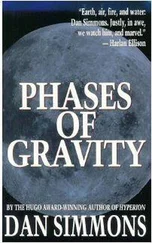It’s almost impossible to tell, just by looking, which hemp ropes are new and reliable and which are ancient, rotten, and certain death to clip on to. That’s what guides are for.
The three of us stay clear of all the ropes as we descend, Jean-Claude angling us closer to the edge of the face, where rockfalls and small snow avalanches are more frequent, even in June. He is trading the slight chance of rockfall or avalanche during the minutes we’re on this part of the face for the definite advantage of more solid footing closer to the ridge.
But why come this way? Why reproduce the last steps of doomed Lord Francis Douglas and the other members of Edward Whymper’s summit party from July 14, 1865?
Most people even mildly interested in mountain climbing know that there are more serious accidents during the de scent stages of a climb than during the as cent, but what they might not know is that a climber has a different relationship to the mountain, especially while climbing on rock, during each of the ascent/descent stages. Climbing up the mountain, the climber is leaning into the rock face, body intimately spread out against the rock, cheek touching rock, fingers groping for any ledge or handhold in the rock, the climber’s entire body seeking out even the smallest ledges, fissures, wedges, overhangs, slabs—it’s like making love to the mountain. During the descent stage, it’s usually more common for the climber to be facing out ward, thus making it easier for the climber to see the tiny ledges and footholds in the yards and meters beneath and beside him; that way the climber’s back is against the rock, his face turned toward (and attention now on) the drop beneath him, much of the view now being the empty sky and beckoning void rather than the very solid and reassuring rock or snow mass.
So descending a mountain is almost always more frightening for the novice climber and more demanding of full attention for even the most experienced climber. Descents claim more lives than the mere climbing of a mountain. But even as I’m taking care to set my feet and hands and following J.C., even as I’m wondering why the Deacon seems to have suggested this particular death route that claimed more than half of Whymper’s party, much of my mind keeps turning over the question Why didn’t the Deacon ask me if I’d be willing to climb Mount Everest?
Of course, it would have been a silly and useless question: I have no money to join one of the Alpine Club’s Himalayan expeditions. (In a real sense, it is a sporting club for men of means, and I’ve already spent most of the modest inheritance I received when I turned twenty-one so that I could come to Europe to climb.) And it is the British Alpine Club—they don’t invite Americans along. British climbers and their Old Boy establishment consider Mount Everest—named for a British cartographer by a British surveyor—an English hill. They’d never invite an American, no matter how skilled he might be.
What’s more, I simply didn’t have the experience required for those heroes who attempt Everest. I had done a good deal of climbing during my years at Harvard—more climbing than studying, to be honest, including three small summer expeditions to Alaska—but that and my months here with Jean-Claude and the Deacon weren’t enough experience or training in advanced techniques to take on the tallest and perhaps fiercest unclimbed mountain in the world. I mean, George Leigh Mallory had just died on Everest, for God’s sake, and it might well have been his wonderfully physically fit but young and relatively novice high-climbing partner, Andrew “Sandy” Irvine, who’d fallen and pulled Mallory with him to his death.
And finally, I admit to myself as we edge another few meters lower, the rope connecting the three of us always properly a little slack, I don’t believe, when push comes to shove, that I have the nerve to go try Everest, even if the Alpine Club should suddenly decide to invite an underskilled and anxious impoverished Yank to accompany their next Everest expedition. (And I know there will be another expedition. Once the Brits get their teeth into some huge heroic expedition challenge, they simply don’t give up, even when their heroes—Robert Falcon Scott, George Mallory—die in the attempt. Stubborn people, those Englishmen.)
But suddenly Jean-Claude and I are at the precise point where four members of Whymper’s first successful summit party fell to their terrible deaths.
I have to interrupt my own narrative here to say that I know it seems strange that I am suddenly going to describe an accident that happened in July of 1865, 60 years previous to the adventure I hope to tell you of that took place in 1925. But as you’ll see, at least one of the seemingly irrelevant details of that tragedy of the Whymper party’s first successful ascent of the Matterhorn became the improbable element which allowed the very unofficial and almost totally unreported Deacon-Clairoux-Perry Himalayan Expedition of 1925.
The Whymper party had climbed the mountain roped together—all seven of them—but for some reason, they began the descent in two roped groups. Perhaps Edward Whymper’s group and the excellent guide Michel Croz’s were impeded by their giddiness and fatigue. On the first rope of four men, Croz—the best climber of them all—went first, followed by the true amateur, Douglas’s friend Hadow, then the fairly experienced mountaineer Hudson, and finally the 18-year-old gifted amateur climber, Lord Francis Douglas.
The three remaining men—still standing at the extreme Swiss edge of the summit as their fellows began to descend—then roped up together: first “Old Peter” Taugwalder, then “Young Peter” Taugwalder, and finally Edward Whymper. Two mediocre guides and one excellent climber. Thus the descending victorious summit party consisted of four British climbers—one a professional, one a gifted amateur, and two pure amateurs—two only moderately competent Valaisans (the Taugwalders), and one truly gifted Savoyard, Michel Croz. By all logic, the supremely experienced guide Croz should have led the expedition—making decisions as well as leading the way—but although he was in the lead of the descent through the “treacherous bit” above the sheer overhang, it was still Whymper who commanded the expedition. And Croz had his hands full; although Hudson was a great help, occasionally steadying or even physically setting the following Lord Francis Douglas’s feet on the proper niches and holds, Croz was doing the same to the more anxious and infinitely less physically capable Hadow for every step of this difficult descent. And Croz had to do this while finding the best and safest route down and then right to the easier summit ridge.
And so the seven descended the “treacherous bit” between the summit and the curving overhang which Jean-Claude, Deacon, and I had just come down.
But just above the spot where we now stood—the fatal spot, as it were—Lord Francis Douglas, the youngest among them, had the courage and brains to suggest that they all rope up and descend together, one team, just as they’d successfully ascended the mountain. I don’t know why Whymper or Croz had not suggested it earlier.
In point of fact, it offered almost no additional safety. This “treacherous bit” of the Matterhorn descent below the summit and above the wave-cresting overhang is difficult now in 1924 with fixed ropes, clear routes established, and a majority of the loose rock long since kicked free of the mountain by climbers. In Whymper’s day, the “treacherous bit” was even more treacherous, especially in terms of “objective danger” such as rockfall, but the greatest danger here—then and now—is that while the niches, fingerholds, and footholds are tiny and hard to find, the projecting boulders and flat areas where a man can brace himself for a belay are all but nonexistent.
Читать дальше












